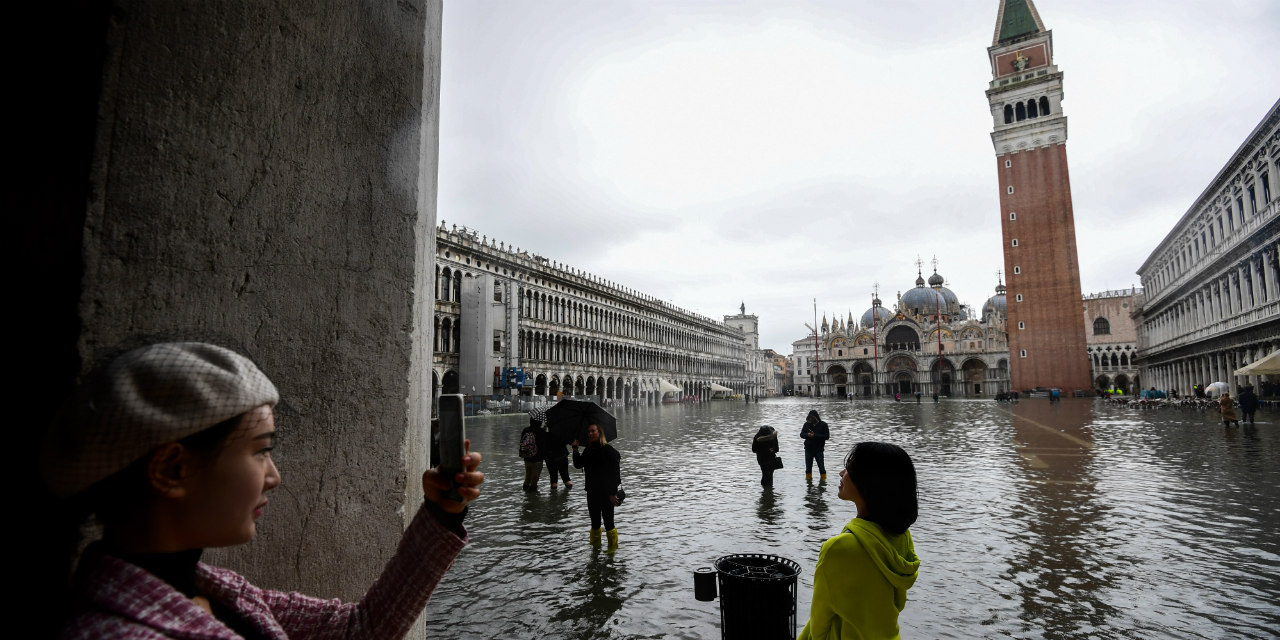Several regions of northern Italy were still affected Sunday by the wave of bad weather that has lasted for about two weeks, Venice is again affected by high tides (acqua alta) that paralyze the lake city. Piedmont was subject to intense rains, the most critical being the Alessandria area (south of Turin) where 200 people had to be evacuated and 600 isolated after the overflowing of several rivers. A woman was missing, according to media reports.
A new "acqua alta" in Venice
Neighboring Liguria was still on red alert with mudslides leading to the closing of the highway between Genoa and Ventimiglia on the French border. Further north, in Valle d'Aosta, 500 people were also evacuated after the closure of several regional routes due to significant avalanche risks.
Ten days after a series of high tides unpublished for several decades, Venice has experienced a new "acqua alta" Sunday morning with a peak 130 cm above the mean sea level, far, however, 187 cm historic (highest level since 1966) of November 12 that had devastated the city.
"Save Venice from steamers, MOSE, climate change and its mayor"
Images of televisions showed people in the famous St. Mark's Square, the lowest point in the City of the Doges, with water above the knee. The water had dropped significantly by midday. A demonstration was scheduled in the afternoon at the call of the collective "No Grandi Navi" (No to large vessels) to denounce the inaction of the authorities in the face of calamities threatening this jewel classified World Heritage of Unesco. "Save Venice ships, the MOSE, climate change and its mayor" is the watchword of this gathering whose organizers claim for years the ban for cruise ships to circulate in the lagoon.
>>> READ ALSO - "I had water under the belt in St. Mark's Square", says a French tourist in Venice
Protesters also demand a moratorium on the MOSE project (Moses in Italian, but here acronym for Experimental Electromechanical Module), the anti-flooding system still under construction. Launched in 2003 and delayed by poor workmanship and corruption investigations, MOSE relies on 78 floating dykes that stand up and block access to the lagoon in case of rising waters of the Adriatic, up to three meters from height.
Recent tests have identified vibrations and rust but, according to the government, it is "ready to 93%" and will be completed in the spring of 2021. The damage caused by the high tide of November 12 is still difficult to assess but according to the first estimates of the authorities, quoted by the media, claims for damages could reach one billion euros.

